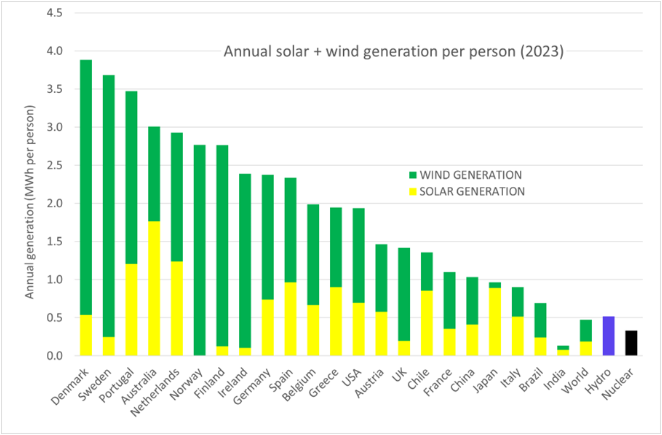The rapid rise of photovoltaic and wind systems is recorded by the data of the international solar energy company (ISES), according to which in 2023 these systems accounted for 80% of new installations among other “clean” technologies.

Over the past decade, global photovoltaic production has increased nine times, reaching 1,500 TWh per year, while wind power production has tripled to 2,300 TWh annually. These increases represent annual growth rates of 22% and 11% respectively. In contrast, hydropower, nuclear power and coal production grew by about 1 per cent annually, while natural gas increased by 3 per cent.
Specifically, this growth rate means that solar energy production doubled every two years and is projected to reach 100,000 TWh per year by 2042, a quantity sufficient to decarbonize the global economy.
Greece is ranked 12th in the world in terms of per capita solar and wind energy production, with other European countries taking the first places.
Nuclear energy has a global average efficiency factor of 74%, followed by coal with 50% to 70%, combined-cycle natural gas with 40% to 60%, wind energy with 30% to 60%; large hydroelectric plants with 30 to 50%; and photovoltaics with 12% to 25%.
Although photovoltaics have a relatively low efficiency factor, their output is expected to exceed that of nuclear in 2026, wind power in 2027, hydropower in 2028, natural gas in 2030 and coal in 2032.
Solar and wind power are now dominating the construction of new power plants, while the development of other technologies remains small and stagnant. Coal, natural gas, and nuclear energy could fall significantly by the middle of the century, as withdrawals will exceed new buildings.










